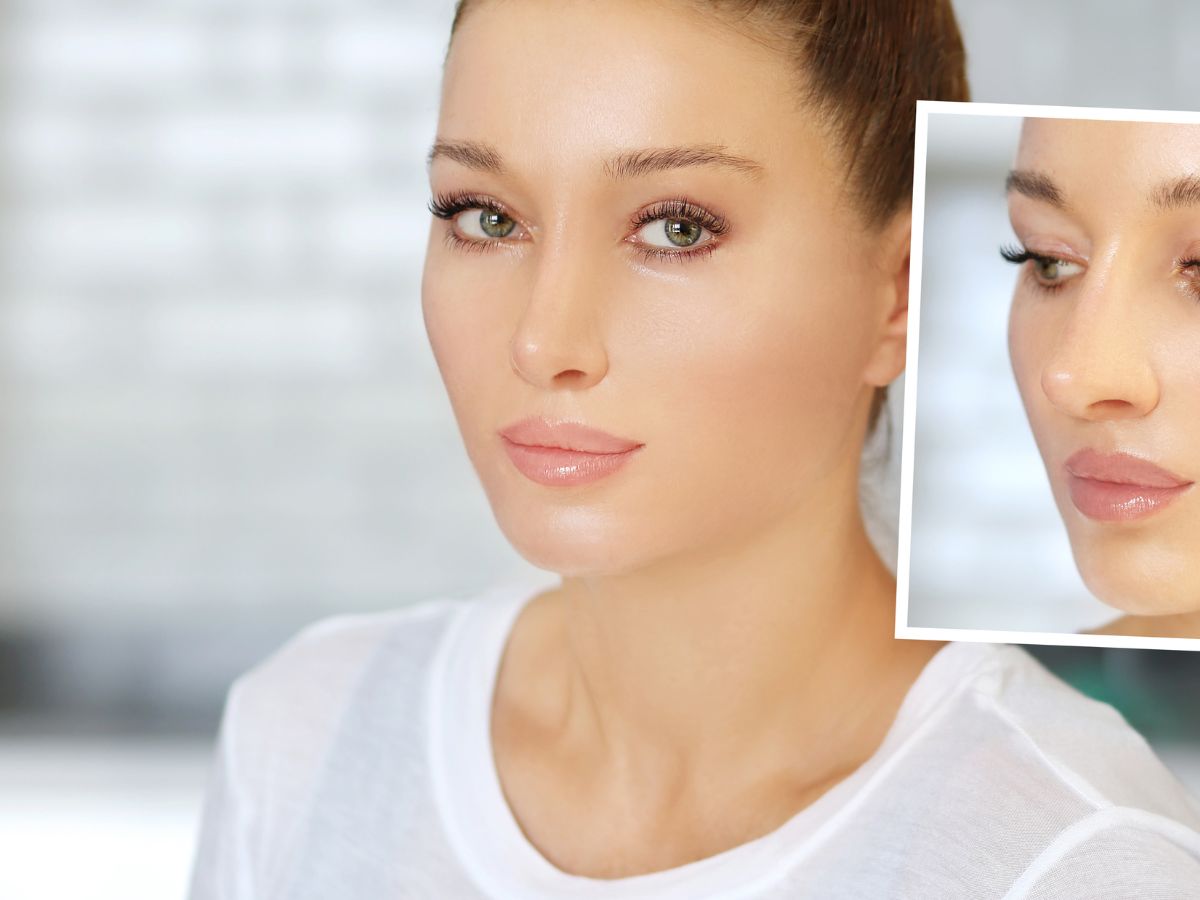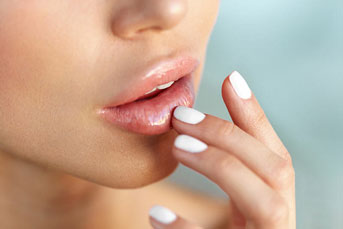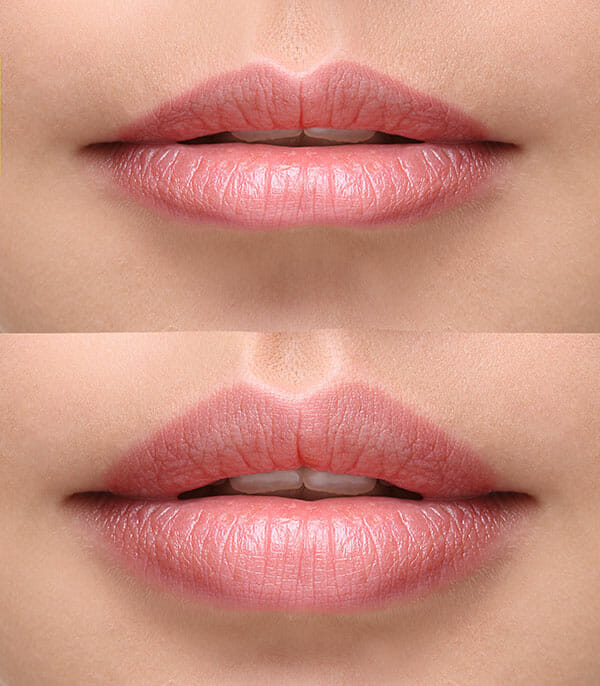
by David Newman, MD | Feb 10, 2023 | Featured
LIQUID RHINOPLASTY
It’s all the craze now! Change your nose without surgery and at a fraction of the cost. Almost sounds too good to believe.
Every day, thousands of men and women trek to the offices of dermatologists, plastic surgeons and health spas alike to have hyaluronic gel based filling material injected under the skin to improve their nasal shape. So are these treatments all that they are advertised to be? Can they really help patients? The answer is yes but the answer is also that things are a little more complicated than just a simple yes. So let’s parse out the pluses and minuses of using fillers to improve nasal shape.
First, let’s talk about the average patient seeking rhinoplasty-or as is commonly referred to a “nose job”. Plastic surgeons hear similar observations from their patients including “my nose is too big” and “I got my dad’s nose”. They also admit they don’t like the bump on the bridge of their nose. And yet another astute observation patients make about their nose is that their tip either sticks out too far or is too wide.
Hyaluronic acid fillers can be injected under the skin both above and below the bump on the bridge of the nose to hide it and make the bridge smooth. But since fillers have volume themselves, injecting fillers makes the nose larger- when the patient really wanted to have a smaller nose in the first place! Likewise, fillers can be used to refine the tip but at the expense of making the tip larger and more prominent.
Another issue in the bump area is that most patients who have a prominent bump on their nose also have a wide nose. This excessive width is caused by wide nasal bones. And, as one might imagine, fillers can not narrow this excessive width. The bottom line is that patients want their nose to be smaller but they want all of the parts to harmonize with each other and relate to each other and that simply cannot be done by adding volume to the nose with fillers. So one might imagine that when a patient comes to the office of a plastic surgeon, the surgeon will recommend a rhinoplasty for the best result. But when they go to the office of a dermatologist or a spa, they will get a filler. It is as simple as that. It is also unfortunate for patients that should they go to a plastic surgeon that was trained to perform rhinoplasty but does not current do rhinoplasty, the patient will be likely recommended a filler instead.
That is why it is so important for patients to find out at their initial consultation, what the treating person’s “scope of practice” is. In other words, does the treating person only do filler for all persons walking into their office? Or do they have the ability to do both filler and rhinoplasty surgery so they are not biased in their recommendation? And if they don’t do rhinoplasty and only do fillers, do they refer the patient to a plastic surgeon for rhinoplasty if that is the best choice? Patients must do their homework, unfortunately, to ensure they get the best treatment they can get because the results of rhinoplasty are permanent, and the results of liquid rhinoplasty can be long lasting.
When one looks at how long fillers can last when used in the soft tissue of the cheek and mouth area, the material generally lasts about a year with current technology. However, when hyaluronic acid fillers are placed over bones such as the nose, they can last two or more years being placed next to this hard surface. That can be good in terms of prolonging a happy result. But when patients don’t like the results of their filler procedures, they may have to wait 2 years or even much longer for the filler to break down naturally to see their original nose. Many patients who want to get rid of their filler can have an enzyme called hyaluronidase injected to break down the material but sometimes the enzyme is not able to remove all of the filler. In addition, patient who were not happy with their filler seek consultation with a plastic surgeon for surgical rhinoplasty and have a difficult time getting a nose job because the filler has caused these and other problems. Patients who seek consultation for cosmetic fillers to the nose are generally not aware of, nor are they generally told that injections about the nose can, very rarely, cause blindness. Again, the most important issue is that all of the alternatives to treatment must be discussed including the benefits and risks of each treatment option.
So one might ask, “If fillers are not the best alternative for the average patient seeking rhinoplasty, what patients are better off treated with fillers?” When patients are bothered by a small bump on the bridge of their nose and the other parts of the nose are aesthetically in good shape and go together, filler might be a good option. Another patient that might benefit from the use of fillers is one with a recessive tip that might be built up. But the problem here is that that patient with recessive tips often have other issues with their nasal appearance tat is better addressed with surgical rhinoplasty.
Another patient who might benefit from liquid rhinoplasty is one who has already had a surgical rhinoplasty but has a minor issue from the surgery such as a bony asymmetry where that defect could be improved with the use of a filler. Plastic surgeons are constantly trying to improve on their cosmetic results and so careful postoperative feedback and observation is important for this constant improvement. Should modification be needed and recommended after surgical treatment, fillers can be used to rescue even an already good cosmetic result.

by David Newman, MD | Oct 2, 2019 | Blog, Featured
 Advances in fillers have led to their safe and effective enhancement of lip shape and size. Lip injections not only contain the filler material but also lidocaine, the local anesthetic used by dentists to numb tissue and so the procedure is more comfortable than ever. Most patients feel that both the upper and the lower lip are small and so have both the upper and lower lip enhanced. There are also many patients who feel one lip requires enlargement as compared to the other and only have that one lip enlarged. Lip injections can also be done to reduce the wrinkles that pop up around the edge of the lips.
Advances in fillers have led to their safe and effective enhancement of lip shape and size. Lip injections not only contain the filler material but also lidocaine, the local anesthetic used by dentists to numb tissue and so the procedure is more comfortable than ever. Most patients feel that both the upper and the lower lip are small and so have both the upper and lower lip enhanced. There are also many patients who feel one lip requires enlargement as compared to the other and only have that one lip enlarged. Lip injections can also be done to reduce the wrinkles that pop up around the edge of the lips.
Lip injections before and after
Before patients have lip injections they may notice that their lips are small or perhaps the pink part of the lip seems to roll in. Patients may also note that the lips don’t have the curvy shape they wish to make them look their best. Others may feel that they simply “have no lips” and wish to have more definition. After lip enhancement with fillers, patients note not only improvement in the size of their lips but also improvement in shape and that their lips are more well defined.
Lip enhancement is an outpatient procedure and patients can have it done on their lunch break, though there is some swelling that takes about 48 hours to come down. So the day after lip injections patients experience generally moderate swelling but usually no pain. The final size and ultimate shape of the lips are achieved usually by 7 to 10 days and generally last about one year for most of the fillers.
What not to do after lip injections
Patients may resume normal activities after lip fillers but should not exercise or do anything strenuous for the next 8 hours. The site is treated as one would normally with cleansers as needed. Aquaphore ointment can also be applied to keep the lips moist.
Lip injections near me
When friends and relatives of patients have the chance to observe lip injections near them they see that the results are natural and not strange looking like they see on TV or in the movies. The enhancement leaves the lips looking more youthful, fuller and in better proportion.
Cost of juvederm lip injections
Costs vary by practitioner. Prices are generally close to each other and patients should be wary if the price is very low.
Side effects of lip fillers
The most common side effects of lip fillers are swelling, bruising and itching. Less commonly, bumpiness of the site may occur.
Do lip fillers hurt?
The lip filler material itself has a numbing agent in it and so when the lips are injected there is mild to moderate pain, depending on the patient. When patients are sensitive to pain or discomfort, a dental block can be performed and this is often done by a physician. One the dental block has been done the lips are completely numb and the lip injections are better tolerated.
Natural lip fillers
The filler material used by all of the common products is composed of hyaluronic acid synthesized as a polymer. It is completely man made. Hyaluronic acid is a chemical that is found in between the cells of our skin tissue. It provides support and has healing properties, and so though it is man made, one can consider it natural because the same material is naturally occurring.

by David Newman, MD | Sep 26, 2019 | Blog, breast-surgery, Featured
Among the most exciting changes in plastic surgery have been the development and widespread use of different types of implants used in breast augmentation. These additions have helped plastic surgeons achieve excellent cosmetic results in nearly all patients. Today, there are more implant choices available than ever and so more to talk about with your plastic surgeon!
A recent survey of plastic surgeons in the US and in Europe has revealed that saline, or salt water filled breast implants are the implant most commonly used in the United States and in Europe, silicone gel breast implants are more commonly used for cosmetic breast surgery. The commonest shape of implant used both in the US and Europe is the round implant by an overwhelming majority and few surgeons still use breast shaped, or “anatomical” implants. Anatomical implants were more frequently used in the past as they were thought to provide a better shape for patients but over time, these implants have been associated with more complications than the simple round breast implant. Anatomical breast implants had also been textured on their surface to keep them in proper position and this textured surface has been implicate in the very rare BIAL, or breast implant associated lymphoma. To date, there has never been a case of BIAL associated with a smooth surfaced breast implant.
Breast Implant Shapes
Along the way in the development of different shapes of breast implants, manufacturers have varied the width and projection of implants to solve issues some patients have in terms of the width of their chest. The ideal shaped breasts create a space in the center of the chest where the breasts come together near the midline. They don’t need to touch but there should be some relation to each other. The ideal breast shape also includes fullness on the side where the breast comes to fall at the edge of the chest but no further. Additionally, the ideal breast shape includes fullness of the upper portion of the breast because this is the part of the breast that is exposed. Breasts should also have good projection, where the breasts stick out from the chest. Both projection and fullness of the upper pole create a sense of youth and vitality.
For round shaped implants, manufacturers have varied the width and the projection of the implants. For example, there are wider implants with less projection and on the other end of the spectrum, narrower implants with more projection. Some patients with wider chests can have a better and more natural breast shape with a wider breast implant that has less projection. And some patients with a narrower chest night also have a better shape with a narrower breast implant that has more projection.
Most patients are best served with an implant that’s in the middle of these extremes. These are round shaped implants with good projection that also have enough width so that the extend towards the middle and the sides of the chest. That way patients have the best of both worlds.
It’s What’s Inside
Implants are constructed as a shell of solid silicone rubber on the outside and the shell is filled with either saline (salt water) or silicone gel. The shell is similar, in concept to a balloon in terms of its flexibility but the shell is very strong and can withstand very high pressures and not deflate. But it is what is inside that can affect how the implant feels and appears. In patients with smaller breasts that have less tissue covering the implant, there is a higher chance to be able to feel the implant or to feel or see waves. This is termed “rippling” and is more common with saline filled breast implants. Silicone gel filled implants have a lower chance for this rippling effect.
Recent Developments
The basic silicone gel breast implant that is still in use today was one of the first implants to be placed on the market 65 years ago. There are three breast implant manufacturers that produce FDA approved gel implants in the US today. They use different names for their products but the implants are basically the same product. The last two years have seen the release of silicone gel breast implants that have a denser gel fill and each company also has their own names for these more dense gel products. The manufacturers state that these thicker gel filled implants have more fullness in the upper part of the breast and that there is a lower chance for rippling than with the basic gel fill. Both of these claims still await independent scientific proof.
The choice of implants is best discussed thoroughly with a plastic surgeon that can listen to a patient’s needs, both in terms of shape and size and is open to discuss the pluses and minuses of each type of implant.




 Advances in fillers have led to their safe and effective enhancement of lip shape and size. Lip injections not only contain the filler material but also lidocaine, the local anesthetic used by dentists to numb tissue and so the procedure is more comfortable than ever. Most patients feel that both the upper and the lower lip are small and so have both the upper and lower lip enhanced. There are also many patients who feel one lip requires enlargement as compared to the other and only have that one lip enlarged. Lip injections can also be done to reduce the wrinkles that pop up around the edge of the lips.
Advances in fillers have led to their safe and effective enhancement of lip shape and size. Lip injections not only contain the filler material but also lidocaine, the local anesthetic used by dentists to numb tissue and so the procedure is more comfortable than ever. Most patients feel that both the upper and the lower lip are small and so have both the upper and lower lip enhanced. There are also many patients who feel one lip requires enlargement as compared to the other and only have that one lip enlarged. Lip injections can also be done to reduce the wrinkles that pop up around the edge of the lips. 